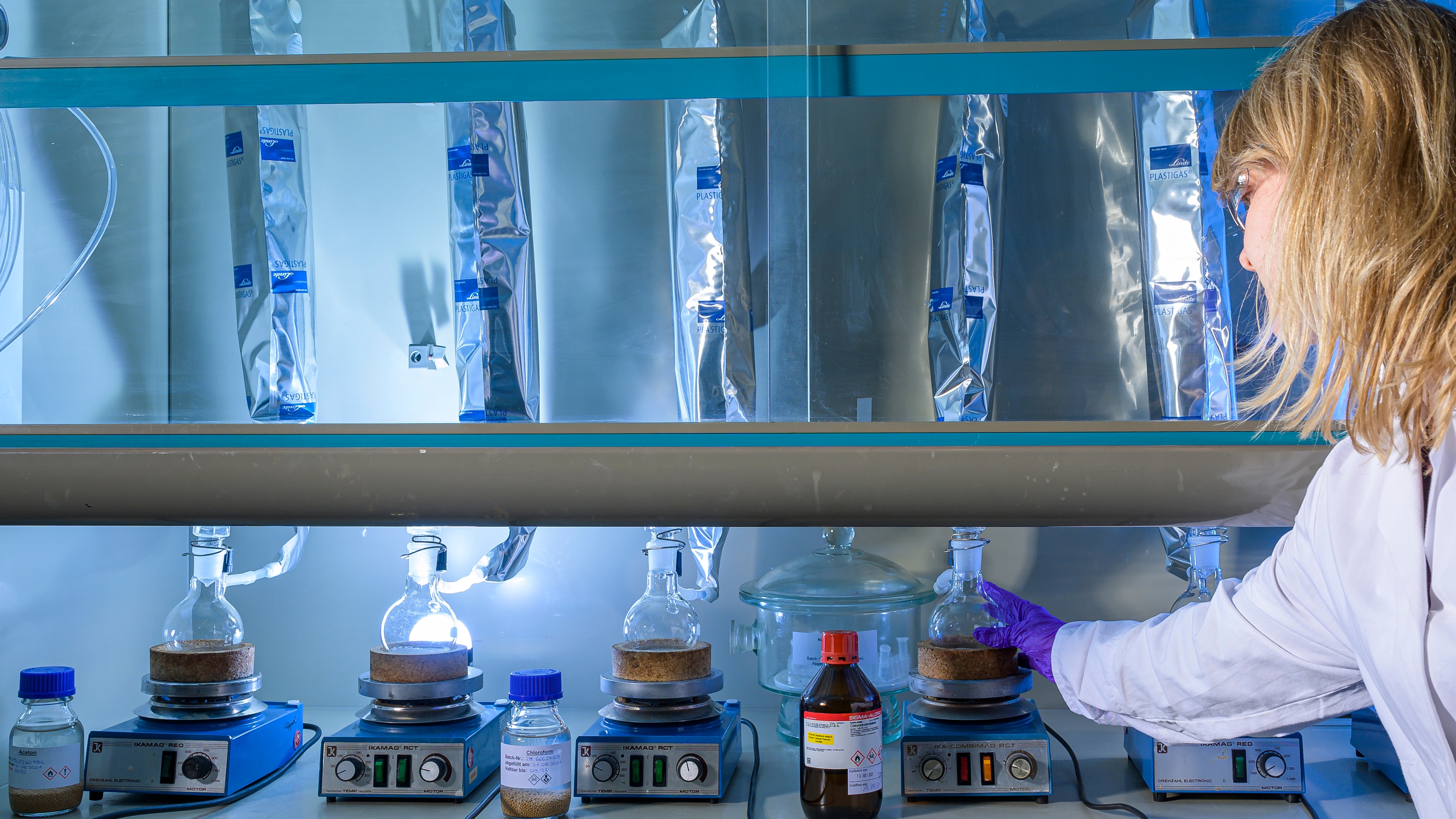Non-extractable residues (NER) are formed during transformation tests of substances in soils or water / sediment systems (e.g. OECD 307, 308). How many NERs are formed depends on the substance properties and the properties of the solid matrix (soil, sediment). The extraction methods chosen also affect the NER, but are difficult to standardize. Thus, the boundary between the extractable portion and the NER is currently not precisely defined.
The ECHA guideline R.11 (2017) emphasizes the importance of NER for the persistence assessment. It is assumed that parts of the NER are only weakly bound and can potentially be released over time. In a worst-case scenario, the entire NER is therefore assessed as a potentially releasable test substance, provided no other information is presented. A classification of different NER types according to their binding status is proposed for characterization: Type I NER as weakly bound and potentially releasable, Type II NER as irreversibly bound (safe sink) and Type III NER or bioNER as molecular components that have been broken down into biomolecules via microbial metabolism.
Together with the Federal Environment Agency and partners from DTU Copenhagen, RWTH Aachen University and UFZ Leipzig, the IME has proposed an extraction scheme for the experimental determination of these NER types in laboratory tests. The study brings together the work of the BfG (Eschenbach and Oing, 2013) and the ECHA discussion paper (Kästner et al., 2018) and gives an idea of the possible application in the persistence assessment of NER-forming substances.
One of the main goals of the study was the development of procedures that can also be used in routine laboratory work. The result is a stepped process in which an NER definition is initially proposed with a final PLE (Pressurized Liquid Extraction). This is followed by a stepped process with harsh, matrix-destroying extractions in order to release NER and, if necessary, to identify it as parent test substance, or known metabolites, by means of chemical analysis. The experimental procedure is supported by the MTB Modeling Tool (Trapp et al., 2022), with which the BioNER can be estimated based on the measured mineralization. The project results were presented in an international workshop in February 2021 and are available at the German Environment Agency (UBA).
 Fraunhofer-Institut für Molekularbiologie und Angewandte Oekologie IME
Fraunhofer-Institut für Molekularbiologie und Angewandte Oekologie IME